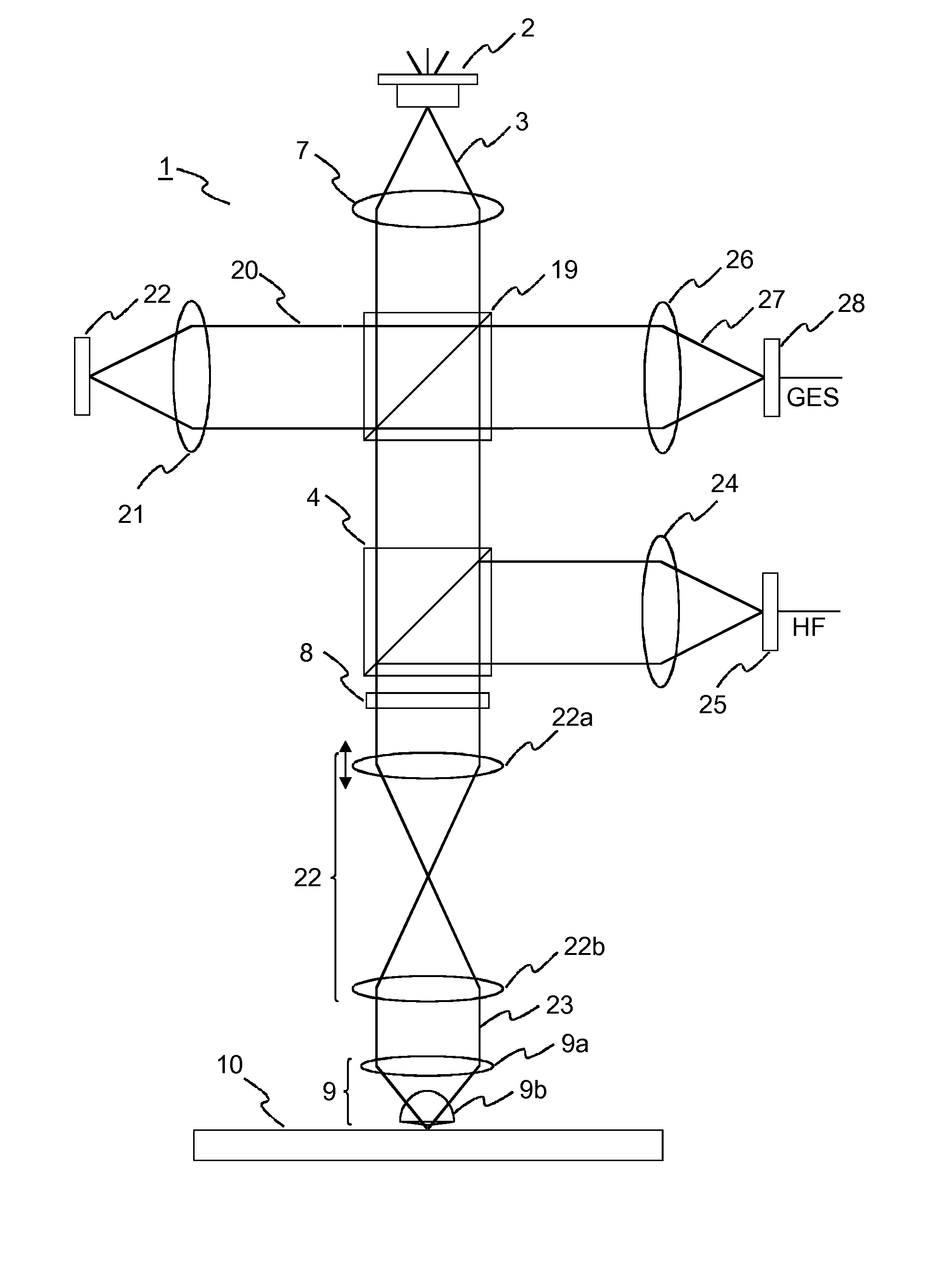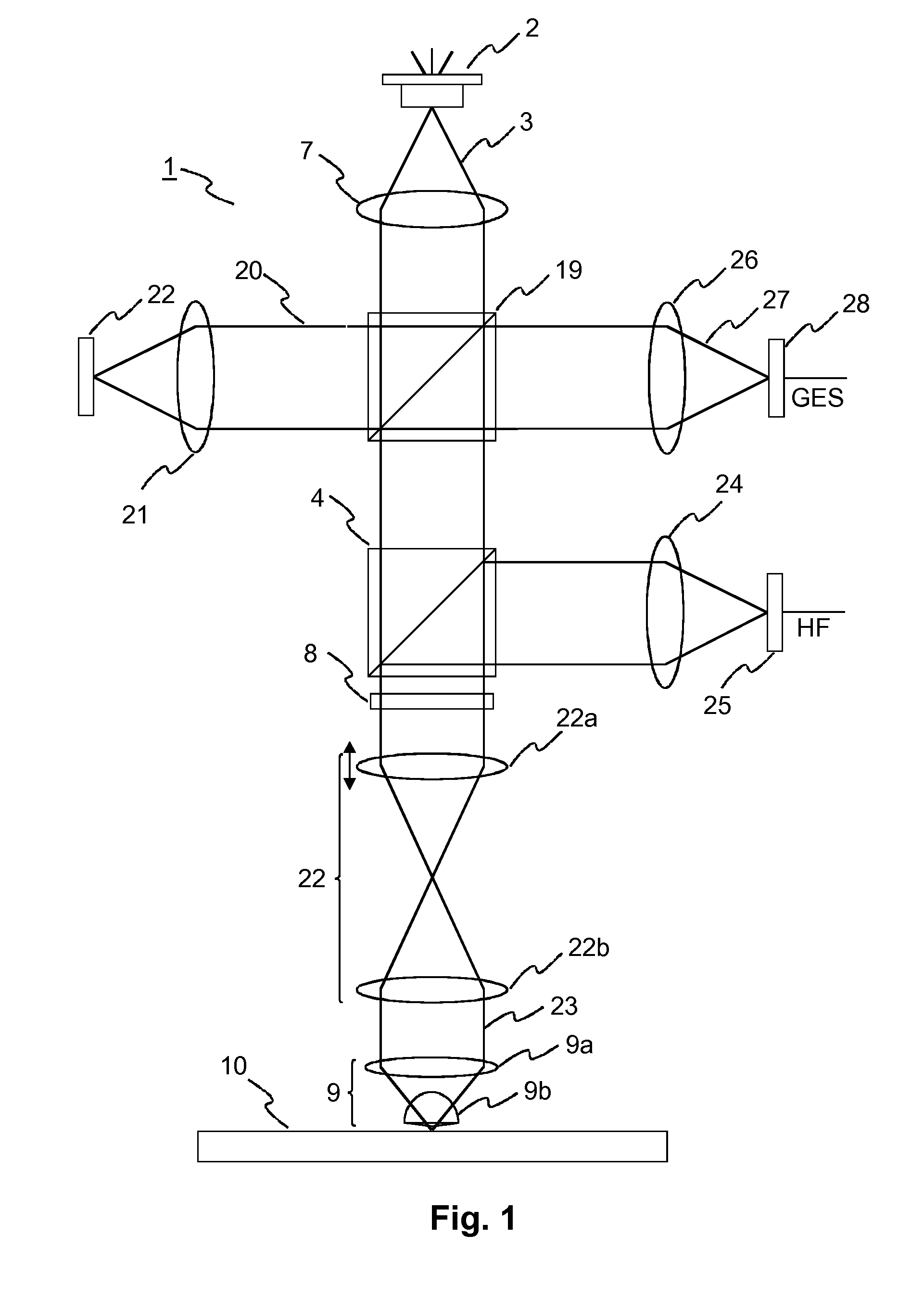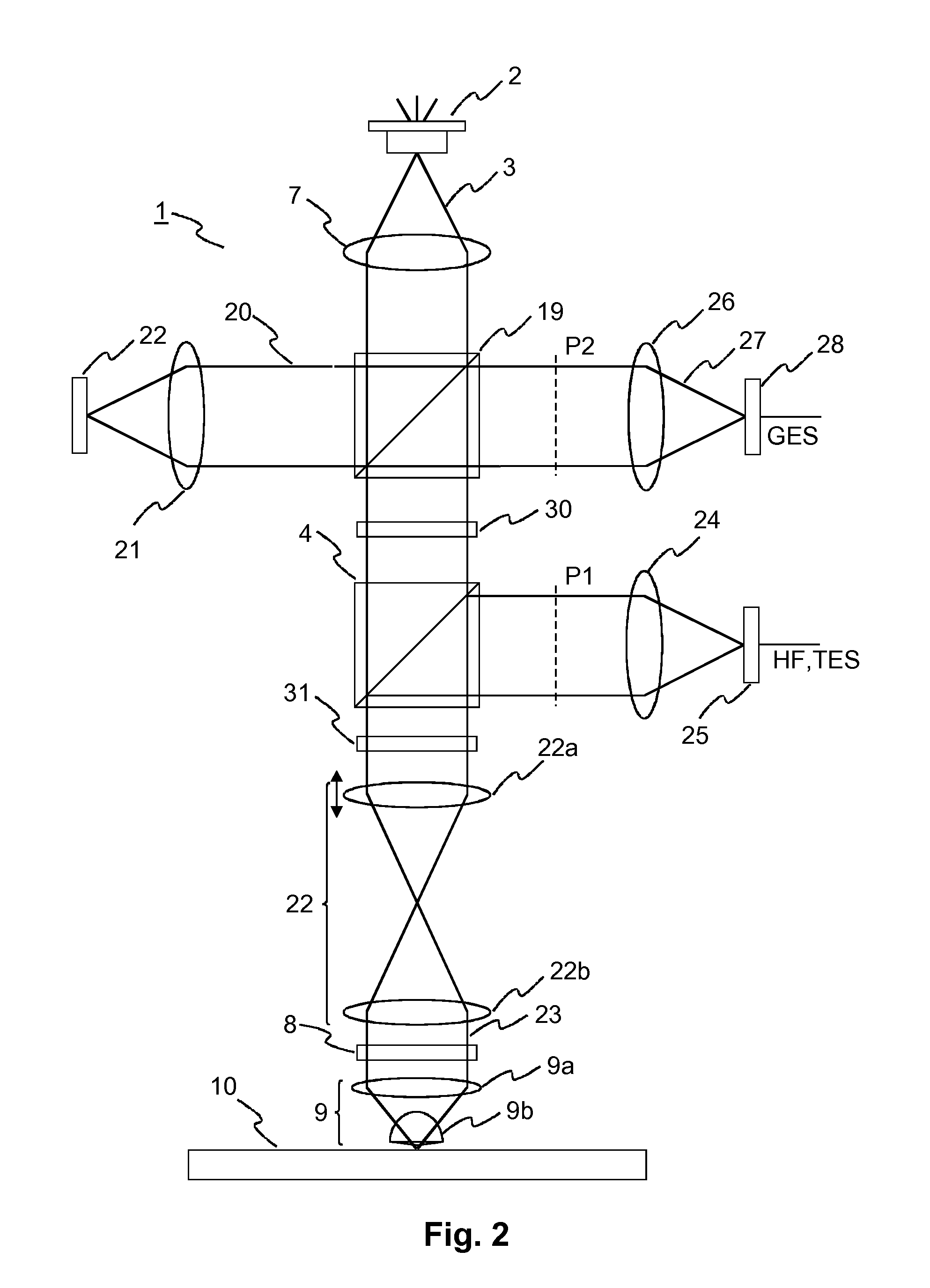Apparatus for reading from and/or writing to a near-field optical recording medium
optical recording medium technology, applied in the field of optical recording medium reading from and/or writing to can solve the problems of insufficient homogeneous cover layer thickness of a near-field optical recording medium, limited optical data storage, and insufficient cost of lenses, so as to reduce the risk of contact between the near-field lens and the optical recording medium, the focus system remains stabl
- Summary
- Abstract
- Description
- Claims
- Application Information
AI Technical Summary
Benefits of technology
Problems solved by technology
Method used
Image
Examples
Embodiment Construction
[0033]An exemplary apparatus 1 for reading from a near-field optical recording medium is illustrated in FIG. 1. This apparatus is known from C. A. Verschuren et al.: “Near-Field Recording with a Solid Immersion Lens on Polymer Cover-layer Protected Discs”, Jap. J. Appl. Phys., Vol. 45 (2006), pp. 1325-1331. A reading light beam 3 emitted by a laser diode 2 is collimated by a collimating lens 7. A non-polarizing beam splitter 19 directs a small fraction 20 of the reading light beam 3 via a first objective lens 21 onto a forward detector 22 for measuring the output power of the laser diode 2. The main part of the reading light beam 3 passes a polarizing beam splitter 4 and a quarter wave plate 8, which converts the polarization of the reading light beam 3 into a circular polarization. The reading light beam 3 then passes through a telescope 22 for focus adjustment, which consists of two lenses 22a, 22b. A near-field lens 9 consisting of a second objective lens 9a and a solid immersion...
PUM
 Login to View More
Login to View More Abstract
Description
Claims
Application Information
 Login to View More
Login to View More - R&D
- Intellectual Property
- Life Sciences
- Materials
- Tech Scout
- Unparalleled Data Quality
- Higher Quality Content
- 60% Fewer Hallucinations
Browse by: Latest US Patents, China's latest patents, Technical Efficacy Thesaurus, Application Domain, Technology Topic, Popular Technical Reports.
© 2025 PatSnap. All rights reserved.Legal|Privacy policy|Modern Slavery Act Transparency Statement|Sitemap|About US| Contact US: help@patsnap.com



